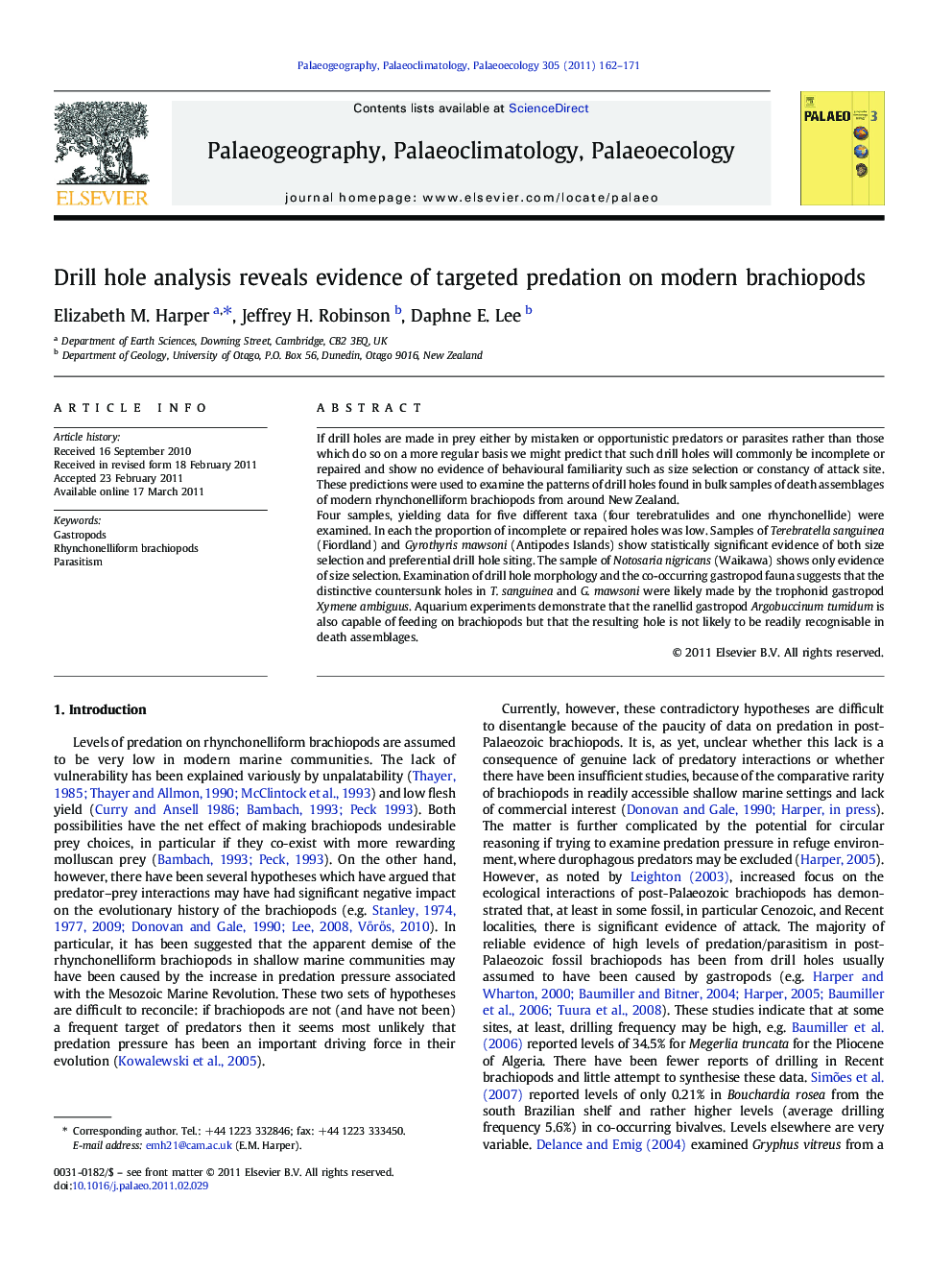| Article ID | Journal | Published Year | Pages | File Type |
|---|---|---|---|---|
| 4467364 | Palaeogeography, Palaeoclimatology, Palaeoecology | 2011 | 10 Pages |
If drill holes are made in prey either by mistaken or opportunistic predators or parasites rather than those which do so on a more regular basis we might predict that such drill holes will commonly be incomplete or repaired and show no evidence of behavioural familiarity such as size selection or constancy of attack site. These predictions were used to examine the patterns of drill holes found in bulk samples of death assemblages of modern rhynchonelliform brachiopods from around New Zealand.Four samples, yielding data for five different taxa (four terebratulides and one rhynchonellide) were examined. In each the proportion of incomplete or repaired holes was low. Samples of Terebratella sanguinea (Fiordland) and Gyrothyris mawsoni (Antipodes Islands) show statistically significant evidence of both size selection and preferential drill hole siting. The sample of Notosaria nigricans (Waikawa) shows only evidence of size selection. Examination of drill hole morphology and the co-occurring gastropod fauna suggests that the distinctive countersunk holes in T. sanguinea and G. mawsoni were likely made by the trophonid gastropod Xymene ambiguus. Aquarium experiments demonstrate that the ranellid gastropod Argobuccinum tumidum is also capable of feeding on brachiopods but that the resulting hole is not likely to be readily recognisable in death assemblages.
Research highlights► Records of predatory drill holes from 5 wild populations of NZ brachiopods. ► Analysis testing predictions that predation is random or mistaken. ► Evidence of size and site selection. ► Evidence of predatory activity in lab.
